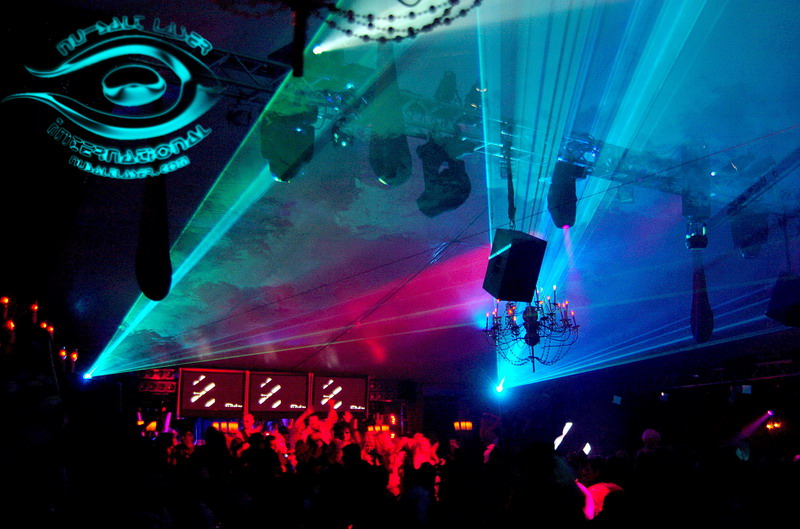As a laser operator and/or producer of laser light shows and displays, I understand and acknowledge the following:
1. Above any other considerations, a laser show must be safe for all persons at the show. This means:
a. The laser light must not cause injury (harmful changes) to eyes or skin.
b. The laser light must not create a potentially injurious condition, such as causing curtains or other materials to ignite.
c. Non-laser safety must also be maintained, in areas such as mechanical mounting (no hazards from falling equipment) and electrical safety.
2. I understand that I am ultimately responsible for the laser show’s safety.
3. I will not present a show which is hazardous (potentially unsafe), or change or modify a safe show so that it becomes hazardous.
4. I will not allow others to override safety considerations, such as show producers or clients.
5. My shows will be continuously monitored so that hazardous conditions can be detected if they occur. In such a case, the condition will be corrected or the laser emission will be immediately terminated (within a few seconds).
a. This is most commonly done using a trained operator who knows what hazardous conditions to monitor, and who knows how to immediately terminate the laser emission
b. Alternatively, continuous monitoring may be done by an automated system if it provides a reliable, equivalent level of safety.
c. Some shows and displays may not require continuous monitoring if audiences and other non-service persons cannot access the beams under reasonably foreseeable conditions. An example is a fully-enclosed rear projection system.
6. Laser safety standards and guidelines should be followed at all times, including during setup/installation, and for all persons in the area, whether general audiences, performers, production staff, etc.
a. For some persons such as performers, there may need to be special safety measures such as dead man’s switches or additional monitoring, to ensure they are in a correct position when lasers are used near them.
7. I will use backup methods to ensure that if beams do not hit a target, they will not pose a hazard. This can include
a. physical backups such as beam stops or having the beam terminate on a building (NOT a window)
b. apertures, beam masks or electronic limits on scanners at the projector, to limit beam movement
c. monitoring so a misaligned beam is noticed and causes laser shut down.
8. I understand that audience scanning requires the highest level of laser safety knowledge, and requires the most care in design, setup and operation.
a. Any deliberate scanning of an audience with laser light should be done in accordance with applicable laws and regulations in the jurisdiction where the laser show takes place.
b. Regardless of the laws which may apply, it MUST be done safely in accordance with generally accepted exposure limits issued by engineering groups such as ANSI (Z136.1) or IEC (60825.1 and 60825.3), or required by regulatory bodies such as U.S. FDA/CDRH. ILDA does not recommend or require any specific standard/regulation. However, the show must meet a generally accepted standard/regulation.
c. In determining compliance, appropriate light-measuring instruments must be used in a valid manner. The eye alone cannot determine if a laser exposure is safe, and standard laser power meters may not be appropriate for these measurements. (ILDA has provided information for Members on how to do measurements, and on suggested practices for audience scanning shows.)
9. I understand that pulsed lasers should never be used for audience scanning; these include Q-switched Nd:YAG and Copper Vapor lasers (including Copper Bromide).
a. The only exception would be under very special conditions that have been reviewed and confirmed by a qualified and experienced laser safety specialist.
i. Two examples of special conditions:
1. Substantial distances (many miles) are involved
2. The pulse repetition rate is extremely high, such as 80MHz
ii. Even under these special conditions, a comprehensive analysis must be done by a highly qualified expert.
b. Such special conditions are so rare that the general rule is to never allow audience scanning with a pulsed laser
10. If I do not understand the above-referenced standards (e.g., ANSI and/or IEC), or if I do not have the equipment and procedures to ensure audience safety, I will not do audience scanning.
11. When doing outdoor shows, I will not illuminate aircraft with light levels which – although eye-safe under the MPE — may be bright enough to cause distraction, veiling glare, or temporary flashblindness of pilots, especially during critical flight phases such as landing and takeoff. Many countries may require outdoor shows to be evaluated and approved in advance by aviation authorities (e.g, U.S. FAA or U.K. CAA). Common safety measures can include:
a. Restricting beams from heavy traffic areas such as flight paths near airports.
b. Termination of beams on nearby buildings or other structures. (Because helicopters may be able to fly between the laser source and a termination point, even terminated beams may need to be monitored.)
c. Aircraft spotters in communication with the laser operator can monitor airspace. The laser beam can be turned off or redirected if there is a potential hazard.



